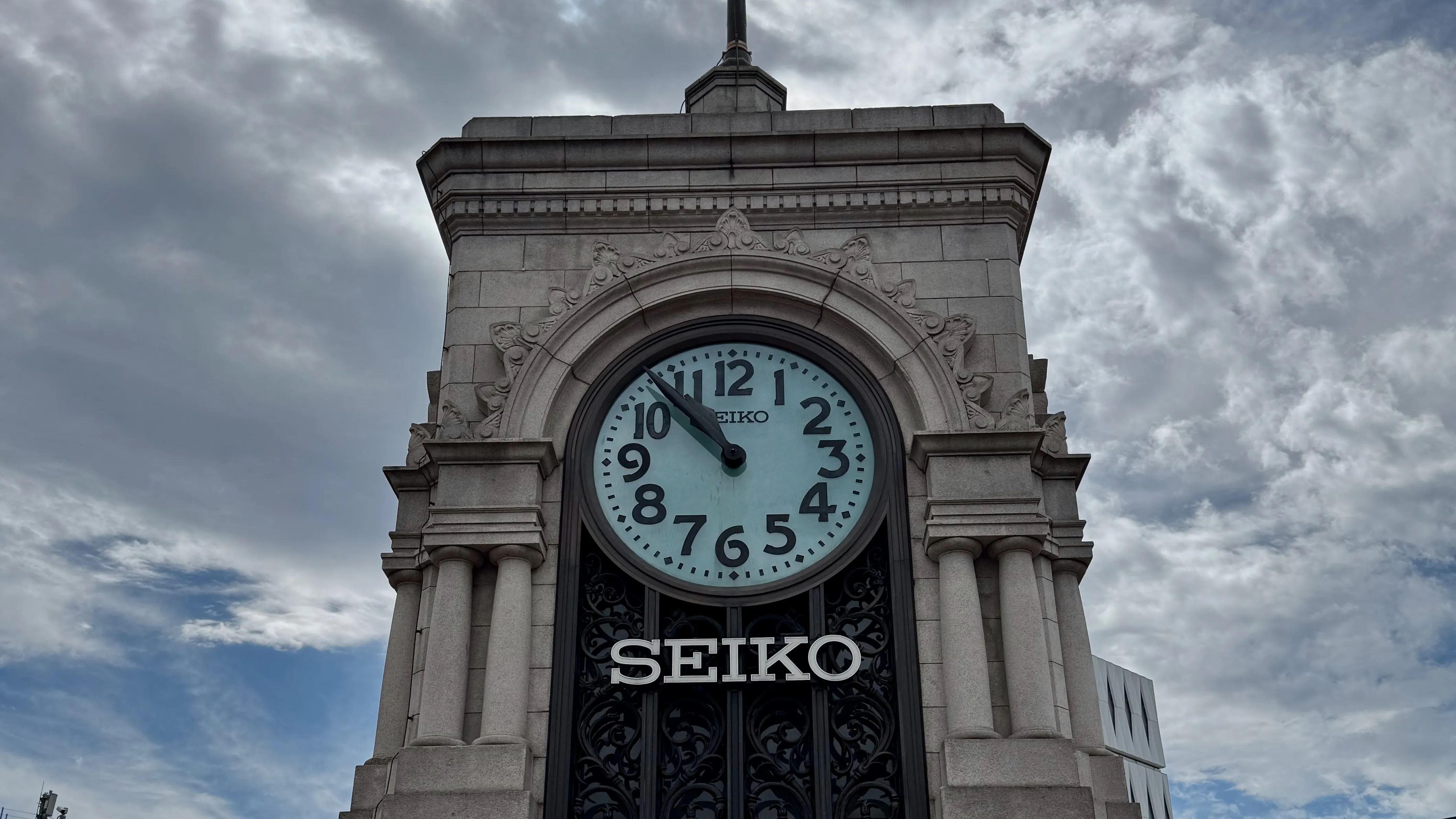Copyright gq

In almost a decade of writing about watches, I feel that I haven’t fully untangled the mystery that is Grand Seiko. Of course, I’ve learned a great deal about the Japanese watchmaker of distinction over the years. You are undoubtedly familiar with Seiko, known for its beloved, highly collectible, relatively affordable watches. But Grand Seiko, the high-end branch of the company, has carved out its own reputation as a favorite among seasoned watch buyers looking to take their dollars somewhere other than the traditional Swiss luxury houses. In GS, the brand’s fans find distinctly Japanese pieces with a distinctive design code and dials inspired by nature’s most wonderful (and specific) splendors. To truly understand this special marque, I recently took a weeklong trip through Japan, visiting the company’s birthplace in Ginza and touring its manufacturing facilities in Nagano and Iwate prefectures. Spoiler alert: I still feel like I’ve only just scratched the surface. Here are a handful of my biggest takeaways from my romp through city and countryside to explore Grand Seiko’s past, present, and thrilling future. Grand Seiko makes the best souvenirs My journey begins at Seiko House in Ginza, the brand’s flagship shop in a building featuring the requisite clocktower. I’m greeted by affable and ever-dapper Munehisa Shibasaki, the director and senior vice-president of Seiko Watch Corporation and the head of Grand Seiko Global Division. Shibaski tours me around the shop, which is decorated with Grand Seiko’s historic accomplishments. In one vitrine is the brand’s signature Hi-Beat movement that beat out nearly every Swiss brand to place second in an observatory trial in Neuchâtel in 1964. Shibaski and his team explained Seiko’s origins, dating all the way back to 1881. The company’s founder, Kintarō Hattori, sensed an opportunity: Watching Japan open up to Western trade and adopt the 24-hour day and Gregorian calendar, he sensed an opportunity and founded a clock import business, later taking up manufacturing and naming his firm “Seikosha” in 1892. (The rough English equivalent is something to the effect of “house of exquisite and precise manufacturing.”) The history is impressive, but it’s the future that the team at GS is most excited about. The flagship store isn’t a museum, but rather an increasingly important destination for the brand’s growing international clientele, “A significant number of overseas customers now choose to purchase their Grand Seiko watches while visiting Japan, which was almost unheard of 10 years ago, says Akio Naito, the president of Seiko Watch Corporation. “And the vast majority of overseas customers who purchase watches in Japan are from the United States. This reflects the growing appreciation for what Grand Seiko represents.” You can only learn so much about Grand Seiko—a brand greatly indebted to the natural beauty of its homeland—by standing in a boutique, though. So, I hop on a large tour bus and drive several hours north to to visit the Shinshu Watch Studio in Shiojiri in Nagano prefecture. Vertical integration has never felt more electric In a nondescript white building in central Japan, Grand Seiko produces its two most important, foundational movements: the 9F quartz and 9R Spring Drive. The latter is what truly sets modern GS watches apart. Produced in the Micro Artist Studio at Seiko EPSON in Shiojiri, this technology is the culmination of decades’ worth of research and development initiated by Yoshikazu Akahane. An engineer and inventor, Akahane wished to make a watch that could go toe-to-toe with quartz in terms of timekeeping accuracy without a battery. Akahane found an elegant solution involving a wheel that actually produces enough electrical energy to power a quartz crystal. Because there’s no traditional escapement, a Spring Drive movement exhibits no “ticking” sound. And because there’s no step motor (like in a traditional quartz movement), the seconds hand glides smoothly around the dial, rather than once per second. Thus, this movement type is truly a hybrid of sorts, blending the benefits of mechanical and quartz-powered tech in a single, highly reliable package. Understanding the inner workings of a watch already requires an immense amount of knowledge and, with all of its innovations, Grand Seiko introduces layers of complexity and new terms to learn, like Spring Drive, the grammar of design, and Zaratsu polishing. The latter is the famed Seiko finishing process that gives Grand Seiko cases their distinctive architecture andis done in Shiojiri by hand. Dials are produced soup-to-nuts right down the hall from the polishing. In the Takumi Mastery Studio, high-grade movements are assembled by workers recognized for their immense skill by the Japanese government with special “contemporary master craftsman” certifications. Meanwhile, R&D, assembly, and finishing of Spring Drive movements occurs in the Micro Artist Studio, as does porcelain dial production of the ultra-high-end Credor Ichi watch. (Credor is a Seiko sub-brand positioned above even Grand Seiko.) No wonder it’s often said that Seiko and Rolex are the two most vertically integrated watchmakers in the world. “Being vertically integrated means that we control the most important aspects of our watchmaking, that the parties involved in creating a Grand Seiko watch work closely with one another, and that we never have to compromise on the core values of accuracy, beauty, legibility, desirability, and comfort,” says Naito. “Many considerations go into making sure a watch deserves to carry the name Grand Seiko, and being vertically integrated is how we do it.” A single watch (and maybe some bears) can beautifully sum up a brand Naturally, as a brand that finds inspiration for its dials in the “violent tides caused by the Black Stream” or when “when dawn breaks over frost-covered forests,” Grand Seiko’s workshops are also nestled in places of stirring beauty. To reach the remote Grand Seiko Studio Shizukuishi in the Iwate Prefecture, I have to take two bullet trains and a bus, but the journey is well worth it. Established in 2020 and designed by famed Japanese architect Kengo Kuma, the gorgeous wooden-clad facility sits in the midst of countless acres of green space, where it’s not uncommon to see local wildlife, including bears, ambling by. More than 90% of the workforce consists of locals, while ample use of red pine and birch in the building’s architecture plays with light and shadow—a key principle of Grand Seiko design. While my previous stop was the home for quartz (or quartz-adjuacent) watches, Shizukuishi is responsible for GS’s wholly mechanical pieces.This is where nearly every component for the brand’s 9S mechanical movements is made in-house, including notoriously difficult-to-manufacture mainsprings and balance springs. Many of the finishing processes are completed by hand, while skills are passed down from generation to generation of craftsmen and women via an apprenticeship program. The workforce radiates with experience and wisdom: some of these craftspeople have 30 years of experience, having attained the world-class certification of Gold Meister. (Just becoming a Bronze Meister takes an entire decade.) The watchmakers working here with beautiful 6,686-ft. Mt. Iwate at their doorstep are continuing the six-plus-decade history of mechanical watchmaking at Grand Seiko—a history that began with the firm’s first watch in 1960. Several vitrines lining the entrance hall at the Shizukuishi facility tell the story of a company that quickly established its own distinctive design language influenced by Japanese culture and craftsmanship: While the original gold-plated and platinum Grand Seiko dress watches from 1960 feature Swiss-influenced aesthetics, the 1964 Self-Dater and (perhaps more crucially) the 1967 44GS established the “Grand Seiko Style” that would inform all subsequent G.S. references. Angular and sophisticated, their cases are complemented by distinctly modernist dials—a pairing that was consciously developed by Grand Seiko chief designer Taro Tanaka as the “grammar of design.” Using three principles and nine design elements, Tanaka gave birth to a style that endures to this day. Every GS watch still adheres to this language that prescribes specific design elements like a flat dial, mirror-polished bezel, and a semi-recessed crown. One of the watches in the workshop’s vitrines caught my eye and neatly sums up how these design codes manifest a beautiful watch. The 45GS, the brand’s first manually-wound hi-beat movement, debuted in 1968 with a beat rate of 36,000 vph and a thin case profile that comfortably hugs the wrist. A date-less reference 4520-8000—all clean lines and glittery stainless steel—seemed like the perfect encapsulation of everything Grand Seiko stood for. Foremost among these traits, of course, is the reverence for Japanese culture. “Without a doubt, showcasing Japanese craftsmanship is central to what we do at Grand Seiko,” says Naito. “Takumi [Grand Seiko’s craftsmen and women] create watches in not only a distinctly Japanese way, but with a focus on handcraftsmanship. There is also a strong emphasis on mentorship and the handing down of rare skills to future generations.” While the older GS watches largely feature simple silvered dials in the mode of contemporary Swiss models, modern versions are famous for their incredibly creative colors, textures, imagery, and finishing. Made in imitation of the rivers, mountains, and natural surroundings of the Seiko facilities scattered throughout the country, they’ve become incredibly popular with collectors of all stripes. “In Japan, we have a concept called mitate, or ‘indirect expression,’” explains Naito. “Our dials are not direct representations of nature-inspired themes. Rather, they feature designs intended to evoke a manifestation of the natural world. The wearer’s mind, memories, and imagination play a part in how the dial design connects back to the nature that inspired it. We find this can lead to a rich experience for the wearer, and it is our pleasure to provide such experiences.” Still, I thought, there’s something distinctly compelling about this older crop of original Grand Seiko designs—the ones from the 1960s and 1970s sitting in the historical vitrine in Studio Shizukuishi. If only I could track one of these babies down, I thought… I needed a GS to call my own Perusing watches in a boutique on Madison Avenue or in a harshly lit meeting room in Geneva is one thing; exploring the company’s place of birth and getting a feel for its history is quite another. After touring its Ginza headquarters and museum, exploring its manufactures in Shiojiri and Shizukuishi, and chatting with Naito, it’s clear that Grand Seiko is a brand whose roots go so deep, one would need multiple lifetimes to find their source. One thing would surely help, however: A Grand Seiko of my own. Spending a week in Japan with GS had finally cleared up some of my confusion pertaining to the company’s history and clarified the timeline of its initial models from the 1960s. In particular, the 45GS—the company’s first hand-wound Hi-Beat watch from 1968—struck me as distinctly minimalist and beautiful. Ginza is full of incredible vintage watch shops, and after trying several of them, I struck gold—or, rather, stainless steel—at the Tokyo-based vintage shop Fire Kids, which just so happened to have a pristine 45GS reference 4520-8000 from 1968. Fitting one of its first models with a high-accuracy movement was a shot across the bow of the Swiss watch industry, proving to Grand Seiko’s competitors in Europe that it could compete both in aesthetics as well as in mechanics. “The pursuit of high accuracy has been the cornerstone of Grand Seiko’s watchmaking since our very first watch,” Naito says. “Accuracy, along with beauty, legibility, durability, and comfort, are pillars of the brand, and everything we do in our watchmaking is carefully considered in light of these objectives.” Following my interview with Naito and before our final group dinner back in Tokyo, I raced down the street from Seiko House. Fire Kids is a small shop within a shopping arcade but its diminutive size doesn’t make it any less of a paradise for watch lovers. The shop carries vintage Rolex Bubblebacks, Omega Semasters, and pieces from Japanese brands, like the one I was after. Sitting in one of the glass vitrines was the watch, looking profound in all its gleaming, Zaratsu-polished surfaces and Hi-Beat glory. A quick swipe of a credit card and it was mine—the culmination of years of studying the brand, and one quick weeklong romp through Japan. Wearing it to dinner that evening and discussing it with Shibasaki, I finally understood the magic of what Grand Seiko had to offer: Taking a Swiss specialty and giving it a distinctly Japanese spin, the company was able to build something that acts as a stand-in for an entire nation, ticking along with accuracy, understated elegance, and beauty.



